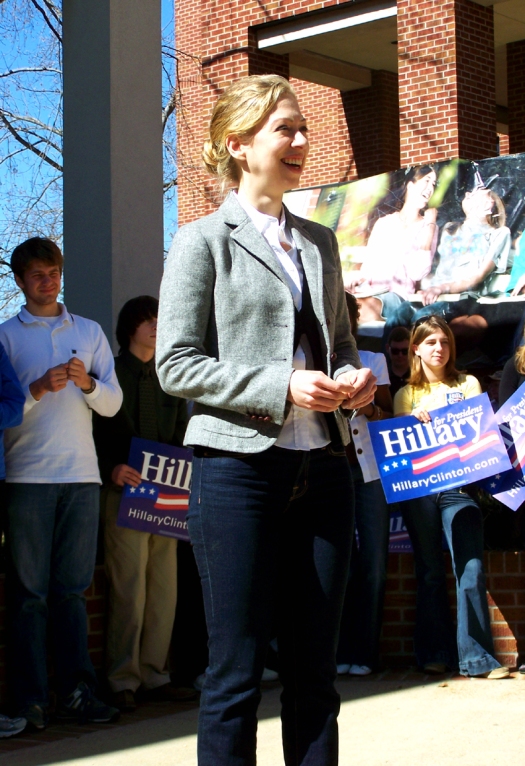Tucked away in the environs of our historic neighborhood is a bit of Greek mythology. A wooded area at the eastern end of Pinehurst Street was once the dream of Jackson land developer L.L. Mayes who saw in its forests, hills and streams a domicilable setting for young families to begin their lives. Mr. Mayes began the development of Sylvandell in the late 1920’s and many of its homes of varied architectural styles may be found in the 1400 block of St. Mary Street (east side) and around the southeastern corner of Laurel Street to Laurel Street Park.
Pinehurst Street (named for the Pinehurst subdivision) was cleared and developed around 1915 as an integral product of Captain William M. Gillespie’s land purchase prior to the Civil War. Captain Gillespie moved to Jackson from Tennessee and for $840 purchased a country place consisting of 40 acres along the “Canton Dirt Road”. The Gillespie Place, which was the origin of the Belhaven neighborhood, was later known to be comprised of portions of North State, Arlington, Hazel and Wells (Poplar) Streets. After the captain’s death the old Gillespie place burned, but was known to have been surrounded by beautiful woodlands so dense only the gables of the house could be seen from the road. It was said that Captain Gillespie left a fortune buried on the grounds of his homestead and thus the land became the clandestine haunts of a number of treasure hunters shovels in hand. That legend, however, is a tale for another day.
Prior to the mid-twenties, that portion of Pinehurst Street that developed east along the southern campus of Belhaven College and on to St. Ann Street was previously known as Harper Street. At its terminus at newly-developed St. Mary (‘s) Street, it dipped into hostile typography: ravines and ditches, hillocks and gulches, filled with a multitude of critters and cries in the night. Most potential developers viewed it as worthless terrain. But not L.L. Mayes, then living with his family in a neoclassical home designed by Emmett Hull, which still stands on the southwest corner of Peachtree and Pinehurst Streets.

Mayes saw a residential niche in the six acres he initially purchased in early 1928. He was sensitive to the needs of young families who either could not afford to buy or preferred to rent their starter home. Mayes described his acreage as a “beauty spot where one would expect to hear Pan playing on his reed pipes and to see fairies and wood nymphs dancing in the dells to his irresistible music.” He therefore commissioned Mr. Joseph Barras, sculptor, to design a concrete entrance of wide steps anchored by nymphs and leading down to the bucolic setting which became Laurel Street Park. Behind the homes on St. Mary and Laurel Streets there were woodlands to the west and a meadow to the east. A descending natural stairway led from the entrance to a simple bridge and winding walkways built of crushed gray slag with white borders which dropped down to ravines and undergrowth and a “babbling brook”. The walkways coursed through rustic walls emulating old English country sides. Interspersed were several benches and tables also designed by Mr. Barras and cast by the N.W. Wright Stone Works that also cast the figures for the main entrance. Homes were built of buff brick, trimmed in white and topped with light apple green tiled roofs. Both the front and rear of the homes were set in a forested atmosphere designed to be attractive from the street.

In addition to Kennington’s store, there were a number of local companies, firms and individuals who contributed to the ambience of Sylvandell. Among these were Enterprise Furnace Manufacturing, A.F. Nash, plumber, Eagle Lumber and Supply Company, Stephenson Brick Company, Jackson Lumber Company, Ricks Storage Company, McCleland, Addkison & Bauer Hardware, D.P. Denny, contractor, E.W. Cook Lighting Fixtures, Ray Wright Sheet Metal, Capital Paint and Glass Company, Moseley, Nelson & Smith Insurance, C.A. Hollis, builder, Ellis Stewart, painter and decorator and Planters Lumber Company.
While not directly in the Sylvandell plat, some residents remember a small building at the top of the hill on Laurel Street where some stone steps now lead to a vacant lot. The structure near this lot is reputed to have been a neighborhood library and careful examination of this garage building shows where this might have been possible. This was most likely a private effort on the part of a literary resident. It was a small but meaningful service to surrounding residents. But whose effort was it? Who cared enough to take the time? Who now knows?
Corinne Fox is a current resident of Sylvandell. As a former Jackson city planning director, she is professionally familiar with neighborhoods, architecture, codes and building policies. She has owned and lived in her home on St. Mary Street since 1971. Corinne knows the history of the development and remembers the remains of the alley dividing portions of her block and the community garage behind what is now an apartment unit on Laurel Street. For 41 years she has never regretted moving from other Jackson locations to Sylvandell and learning of its history since eye physician Dr. W.L. Hughes was her house’s first tenant in 1930. Other early residents in these homes according to the census were Bernard Lowe (fire insurance agent), P.R. Galbreath (automobile dealer), Donald Munroe (geologist and weatherman), Hamilton McRae (wholesale hardware), Freeland Gale (store clerk), Lacey Hughes (dentist) and Ernest Laird (bank cashier). “The people who settled this area were of some prominence,” she says, “and still are today through their myriad interests, achievements and gifts to this community.”
“I love being in this house,” she responded when asked of her home. “This is an area with an ideal mix of people – young, old, all income levels and interests in life. I feel safe here with furnishings of my earlier life and among friends who are part of my life today. My new neighbor is an FBI agent. No wonder I feel so safe!”
Special Agent Robert H. Ruby, who grew up in Starkville, came to Jackson from New Orleans about a year and a half ago. He kept hearing good things about “a small town setting (Belhaven), sitting in the middle of Jackson”. He at first considered building a new house on a vacant lot, but later decided to renovate an existing structure in Fondren or Belhaven. A Belhaven realtor told him about one of the Sylvandell homes which had fallen into serious disrepair. Upon first inspection of the property Robert said “no way”. But the more he learned of the neighborhood the more determined he was to live not only in Belhaven but that very house. His decision was made. “It took 13 months from the time I obtained the property to get the multitude of clearances from the city which had originally wanted to demolish the existing structure. I spoke with a builder who is college buddy and he told me he could make the house look like new while keeping the original appearance.” The task is now complete and Robert has moved into the house which is a showplace and he plans to have it as his “home forever”.
When resurrecting old structures one of the first things you want to know is if there is a ghost. “Of course there is a ghost,” Robert says, “one of a former tenant, and he welcomed me with sights and sounds the first week I lived here.” The first night, while Robert was sleeping, there was the sound of a picture falling from the wall. He turned on the lights, investigated but could not find where this had occurred. The second night he thought he heard a key turn in the front door. Again, no evidence. On the third night there was a ‘crash’. No motive could be found. Although there have been no incidences since, the new tenant feels confident he has been accepted by his ghost and there will be no further contact.

You may now wish to pause for a moment and enter the heart and thoughts of the young couple viewing their new dwelling for the first time some 80 years ago. You can imagine their dreams of starting their life together in prosperous times, planning their family and roads to success. You might think of them walking hand in hand on the pathways along the stream, pointing out the hues in the foliage and discussing improvements and the larger home they would one day own. You can also see in the mind’s eye the development of this neighborhood and the foundations of its larger future.
The fairies and nymphs are gone now. Well, almost. The concrete foundations of Pan’s pipes remain crumbling at the dead-end of Pinehurst and the steps and little footbridge across the brook and into the park have returned to the soil. Sylvandell has given way to Greater Belhaven. Laurel Street Park is entered from the north. The remaining homes are now of varied hues and the woods have grown over the little footpaths. Driveways and garages have replaced the hidden community carports originally earmarked for resident’s vehicles. Pan and his music have gone back into the flocks and shepherds from whence they came. But a single nymph remains, hidden along a nearby driveway in the vicinity of her once statuesque beauty. She is quiet now and pensive, recalling her origins in folklore and proud of her singular role of helping frame one of Belhaven’s most classical neighborhoods.


Nan Ertle Harvey is a native of Yazoo County, a graduate of Mississippi College and has lived with her husband Bill in the Belhaven neighborhood since 1994. She worked in a research position in the Department of Microbiology at UMMC, retiring in 2003. Nan’s hobbies are photography, nature study and family research. She is a volunteer at the Mississippi Department of Archives and History. Bill Harvey is a native Jacksonian, living most of his life in Belhaven. A MSU Bulldog, he has had careers in journalism, education and as development director of the Andrew Jackson Council, Boy Scouts of America. Bill enjoys photography, music, writing articles for neighborhood sources and sharing experiences with friends at a local coffee shop. (Text copyright Bill and Nan Harvey, used by permission of Bill and Nan Harvey)
Sources:
1) “Keith’s Beautiful Home Magazine”, Jackson Daily News, March 3, 1929
2) Corinne Fox, Sylvandell resident
3) Robert H. Ruby, Sylvandell resident
4) 1930 Census (Hinds County, Mississippi, Beat 1; City of Jackson, Ward 5)









